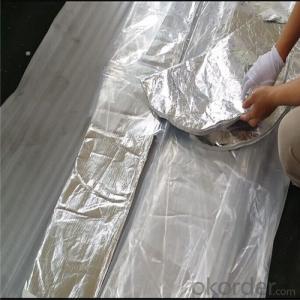EPS Foam Boards: An Economical Insulation Option
Hey there! If you’re reading this, chances are you’re on the hunt for a cost-effective insulation solution that doesn’t compromise on quality. Well, buckle up, because we’re about to dive into the world of EPS foam boards – a material that’s not just affordable, but also incredibly versatile and efficient.
The Wonders of EPS Foam
EPS, or Expanded Polystyrene, is a lightweight material that’s a dream come true for anyone looking to insulate their home or office. It’s made from tiny beads of polystyrene that are expanded with a special gas to create a rigid, yet lightweight foam. This foam is then molded into boards that can be easily cut and fitted to the specific needs of your insulation project.
Why Go for EPS Foam Boards?
Let’s cut to the chase – EPS foam boards are a fantastic choice for a number of reasons. They’re not just budget-friendly; they’re also incredibly energy-efficient. Here’s a breakdown of why you should consider EPS foam for your next insulation project:
– Cost-Effective: EPS foam boards are one of the most affordable insulation materials on the market. They might just save you a pretty penny on your energy bills in the long run.
– Thermal Efficiency: With an R-value that can range from 3.5 to 4.5 per inch, EPS foam boards provide excellent insulation, keeping your space warm in the winter and cool in the summer.
– Lightweight: These boards are a breeze to handle and install, making your insulation project a whole lot easier and less time-consuming.
– Moisture Resistance: EPS foam doesn’t absorb water, which means it won’t rot, mold, or mildew – a huge plus for any insulation material.
– Customizable: Need a specific size or shape? No problem! EPS foam boards can be easily cut and shaped to fit your unique space.
– Environmentally Friendly: EPS foam is made from recyclable materials and is itself recyclable, making it a green choice for eco-conscious consumers.
Installation Made Easy
One of the best parts about EPS foam boards is how easy they are to install. Whether you’re a seasoned DIY enthusiast or a first-timer, here’s a quick guide to help you get started:
1. Measure Your Space: Before you bring out the power tools, measure the area you’re looking to insulate. This will help you determine how much EPS foam you’ll need.
2. Cut to Size: Using a utility knife, carefully cut the EPS foam boards to fit your space. Remember to wear safety gear to protect your hands and eyes.
3. Apply Adhesive: Apply a construction adhesive to the back of the foam board. This will help it stick securely to your wall or ceiling.
4. Attach the Boards: Press the foam board firmly against the surface, smoothing out any air bubbles as you go. Make sure each board is level and properly aligned.
5. Seal the Edges: Use a sealant to seal the edges of the foam boards, preventing air leaks and ensuring a tight fit.
6. Finish the Job: Once everything is in place, you can add a layer of drywall or another finishing material to complete the look.
The Versatility of EPS Foam
EPS foam boards aren’t just for insulation. They’re also incredibly versatile and can be used for a variety of other applications, such as:
– Soundproofing: EPS foam can help reduce noise pollution in your home or office.
– Floats for Fishing: Believe it or not, EPS foam is used to make fishing floats due to its buoyancy.
– Art and Crafts: The lightweight and easy-to-cut nature of EPS foam makes it a popular material for artists and crafters.
– Protection for Packages: EPS foam is often used as packaging material to protect fragile items during shipping.
The Downsides to Consider
While EPS foam boards have plenty of perks, it’s important to consider the potential downsides before making your decision:
– Flammability: EPS foam is flammable, so it’s crucial to treat it with a fire retardant before use, especially in areas with high fire risk.
– Limited R-Value: While the R-value is decent, it’s not the highest on the market, so for areas requiring extreme insulation, other materials might be a better fit.
– Environmental Impact: Although EPS foam is recyclable, not all recycling facilities accept it, and improper disposal can contribute to environmental waste.
Making the Right Choice
Choosing the right insulation material for your project is crucial. EPS foam boards offer a great balance of affordability, efficiency, and ease of use. However, it’s important to weigh the pros and cons and consider your specific needs and circumstances.
Final Thoughts
In conclusion, EPS foam boards are a fantastic option for those looking for an economical insulation solution. They’re easy to work with, offer excellent thermal efficiency, and can even be used for a variety of other applications beyond insulation. Just remember to take the necessary precautions and consider the potential downsides to ensure you’re making the best choice for your project.
So, what do you say? Are you ready to give EPS foam boards a try? Let’s make your space more energy-efficient and comfortable without breaking the bank!

